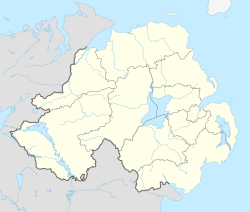Background
In 1988 both the UVF and the UDA had stepped up their campaigns against the Nationalist community, in part due to receiving a large arms shipment of handguns and assault rifles from South Africa. On 15 January the UVF shot dead Catholic civilian Billy Kane at his home in the New Lodge. The objective of the Avenue Bar attack was to kill a leading Republican from the Unity Flats. [1]
Previous UVF attacks
The bar had already been targeted by the UVF on two separate occasions in the mid 70s. The first attack occurred on the 1 November 1973, a car bomb detonated outside the bar killing a Catholic pensioner, Francis McNelis (65). [2] The second attack occurred on the 15 May 1976 (exactly 12 years to the day before the 1988 shooting) when a UVF unit threw a bomb into the bar, the following explosion killed two Catholic civilians and injured several others inside the bar. [3] The two people killed in the attack were, Henry McMahon (39) & Francis Heaney (46). [4]
The shooting
The attack occurred at 2:20pm when the bar was crowded with patrons. Two gunmen walked into the pub after being admitted through an electronic security door. A witness said they at first seemed to be looking for someone, but then opened fire indiscriminately with automatic weapons. [5] People threw glasses at the gunmen in an attempt to fight them off. The gunmen escaped in a car which had been hijacked 20 minutes earlier on the Shankill Road, and which was found abandoned at Carlow Street behind Shankill Leisure Centre shortly after the attack. [6] The three victims were Stephen McGahan (27), from the New Lodge, Damien Devlin (24), from Andersonstown, and Paul McBride (27), from Ardoyne. The UVF almost managed to kill another leading Provisional IRA member from the Unity Flats who was drinking in the bar at the time of the attack. [1]
Aftermath
On 15 June 1988, a month after the killings at the bar, the Provisional Irish Republican Army (PIRA) shot dead a UVF commander, Robert "Squeak" Seymour, who the PIRA alleged had ordered the Avenue Bar attack. He was killed by the PIRA in an alley behind his video shop in Woodstock Road, east Belfast. [7]
In January 1990, three self-confessed Ulster Volunteer Force volunteers were sentenced to life in prison for the parts they played in the Avenue Bar shooting along with the killing of another Catholic civilian on 15 January 1988 in Upper Meadow Street, Belfast. . [8]
This page is based on this
Wikipedia article Text is available under the
CC BY-SA 4.0 license; additional terms may apply.
Images, videos and audio are available under their respective licenses.
